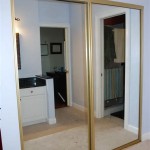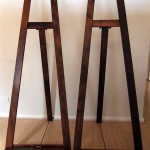How To Mirror Two TVs with HDMI
Mirroring content across multiple displays offers an enhanced viewing experience, useful for presentations, entertainment, and expanding workspace. While several methods achieve this, utilizing HDMI connections remains a popular choice due to its simplicity and widespread availability. This article outlines the process and equipment required for effectively mirroring two TVs using HDMI.
Understanding HDMI Mirroring
HDMI mirroring duplicates the content displayed on one screen onto another. This is distinct from extending the display, which treats the second screen as additional workspace. Mirroring ensures identical output on both TVs, beneficial for scenarios demanding synchronized viewing.
Equipment Required for HDMI Mirroring
Several components are necessary for achieving HDMI mirroring. The specific hardware depends on the source device and the TVs' capabilities: *
Source Device:
This refers to the device providing the content, such as a laptop, desktop computer, Blu-ray player, or streaming box. *HDMI Splitter:
This device accepts a single HDMI input and duplicates the signal across multiple HDMI outputs. Splitters come in various configurations supporting two or more displays. *HDMI Cables:
High-speed HDMI cables are recommended to ensure optimal signal quality and prevent issues with resolution and refresh rates. Ensure cable length is appropriate for the setup. Multiple cables (generally two) will typically need to be purchased. *Televisions (2):
Any two televisions equipped with HDMI input ports are suitable for mirroring. *Optional: HDMI Switch (For Sources with Limited HDMI Ports):
If the source device lacks sufficient HDMI outputs, an HDMI switch can be used to toggle between different display devices. This is less common when mirroring, however.Setting Up HDMI Mirroring with an HDMI Splitter
Using an HDMI splitter is the most common method for mirroring two TVs. The process is relatively straightforward: *
Connect the Source to the Splitter:
Connect an HDMI cable from the HDMI output of the source device to the HDMI input of the splitter. *Connect the Splitter to the TVs:
Connect separate HDMI cables from the HDMI outputs of the splitter to the HDMI input ports on each television. *Power On the Devices:
Turn on the source device, the splitter (if it requires external power), and both televisions. *Select the Correct HDMI Input on the TVs:
Use the remote control for each television to select the HDMI input corresponding to the connection from the splitter. *Verify Mirroring:
The content displayed on the source device should now be mirrored identically on both televisions.Troubleshooting Common HDMI Mirroring Issues
Occasionally, issues may arise during the HDMI mirroring setup. Here's a guide to address common problems: *
No Signal:
Verify all connections are secure and that the correct HDMI input is selected on the TVs. Try different HDMI cables to rule out cable faults. Ensure the splitter is powered on if necessary. *Resolution Issues:
The splitter may not support the source device's output resolution. Try lowering the resolution on the source device. Check your HDMI cables are capable of the resolution you require. Shortening a longer HDMI cable run can assist in restoring picture. *Audio Issues:
Check the audio settings on the source device. Ensure the splitter supports audio passthrough. Some TVs may require separate configurations for audio sources with unusual configurations. *HDCP Errors:
High-bandwidth Digital Content Protection (HDCP) can sometimes interfere with mirroring. Try temporarily disabling HDCP on the source device if possible. Be aware that some content will not play with HDCP disabled. Most modern splitters manage HDCP without intervention, so this is less of a concern now. *Intermittent Flickering or Signal Loss:
This may indicate a faulty cable or a splitter struggling with bandwidth. Try shorter, higher quality HDMI cables or a splitter that explicitly supports higher resolutions or refresh rates.Alternative Methods for Mirroring (Without a Splitter)
While an HDMI splitter is the most common method, alternative options exist depending on the source device and TV capabilities: *
Direct HDMI Connection (If Source Has Multiple HDMI Ports):
Some devices, like some laptops, provide multiple HDMI outputs, allowing direct connection to two TVs without a splitter. However, this is less common. *Wireless Display Technologies (Miracast/WiDi):
Some TVs and source devices support wireless display technologies, eliminating the need for physical cables. Compatibility and setup procedures vary depending on the specific technology. Note that wireless methods can be less secure and may have higher latency than HDMI. *Smart TV Features:
Some Smart TVs offer screen mirroring features that can be used with compatible mobile devices or computers. Refer to the TV's documentation for setup instructions and compatibility information. *Casting Devices (Chromecast/Roku):
Streaming devices like Chromecast and Roku allow mirroring from compatible devices. These offer a simple wireless solution, but be aware that they may also have latency and may not support all content, depending on copyright protection.Factors Influencing HDMI Mirroring Performance
Several factors can impact the overall performance of HDMI mirroring: *
HDMI Cable Quality:
High-quality HDMI cables are essential for maintaining signal integrity, especially with longer cable runs. *Splitter Bandwidth:
The splitter's bandwidth determines the maximum resolution and refresh rate it can support. Choose a splitter that matches the capabilities of the source device and TVs. *Source Device Capabilities:
The source device's processing power and graphics capabilities play a role in the quality and smoothness of the mirrored output. *Wireless Interference (For Wireless Methods):
Environmental factors like other wireless devices can negatively impact the performance of wireless mirroring solutions. Positioning devices to minimise obstructions can help mitigate this.
How To Stream Multiple Tvs Using A Single Source Boomspeaker

How To Connect Two Tvs Together Tech News Today

How To Connect Two Tvs Display The Same Picture Plus Setup Displays Diffe Pictures Pointerer Com

How To Split S From Laptop 2 Tv
Is There A Way To Make 2 Tvs Play The Same Thing At Once Quora

Multiple Tvs Playing The Same Thing Hdmi Splitter How To

4 Ways To Watch On Multiple Screens At Once

How To Set Up Multiple Tv Displays With An Hdmi Splitter

How To Connect Two Tvs Together Using A Single Source Digital Masta
I Ve Figured Out How To Connect Two Tvs A Pc At Once My Question Is Can Have Tv Sounds If Yes Quora








